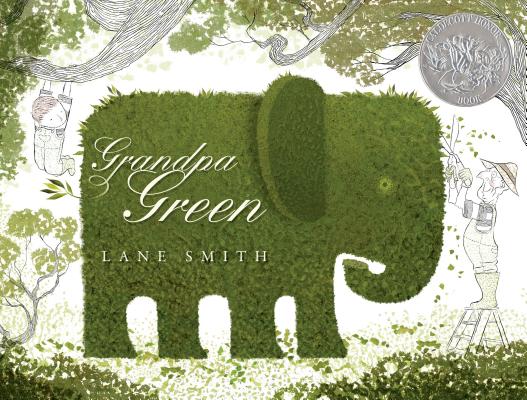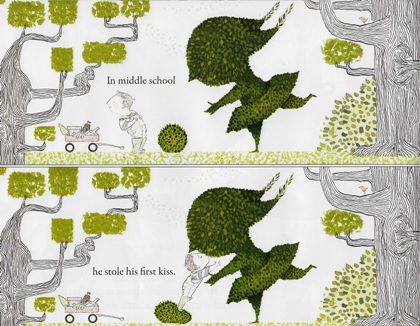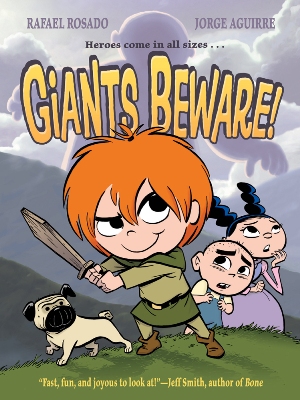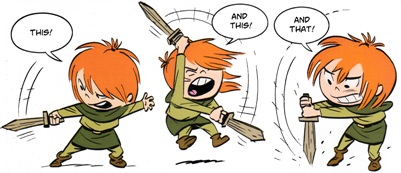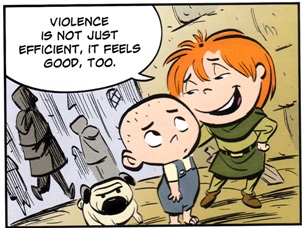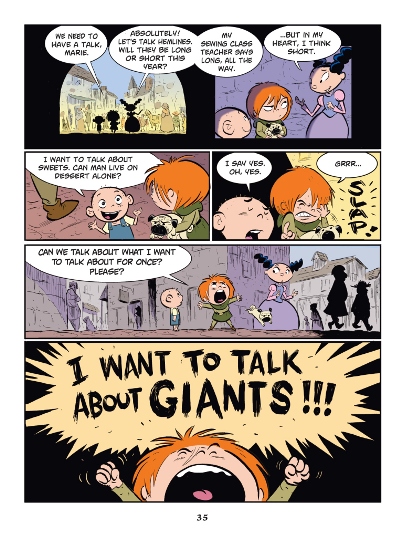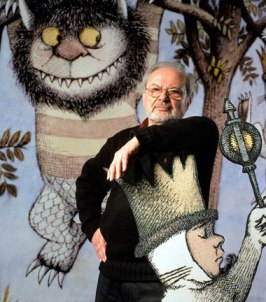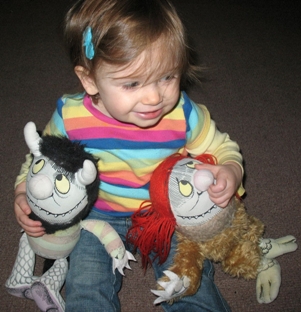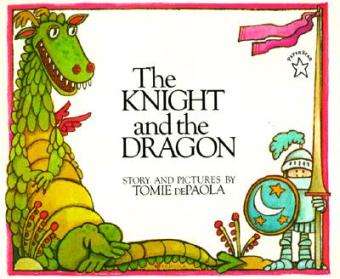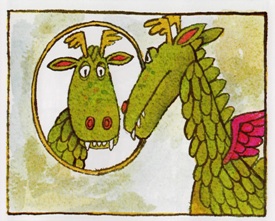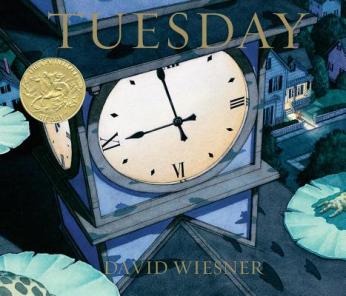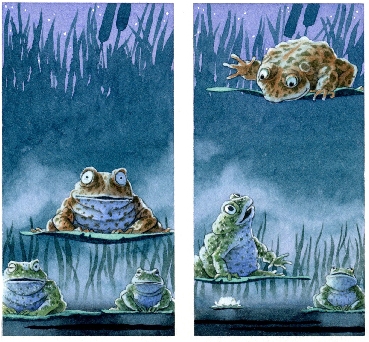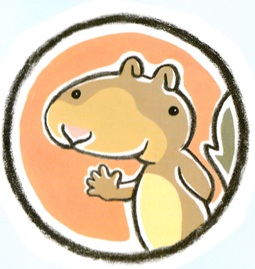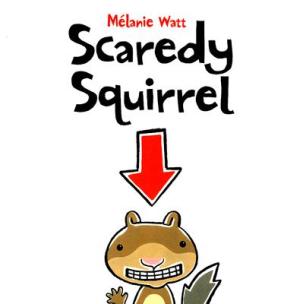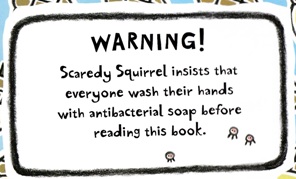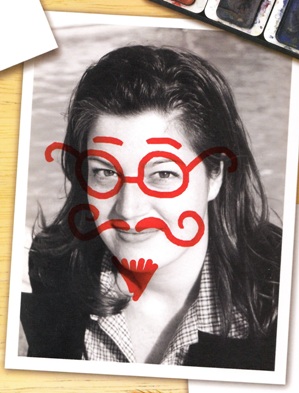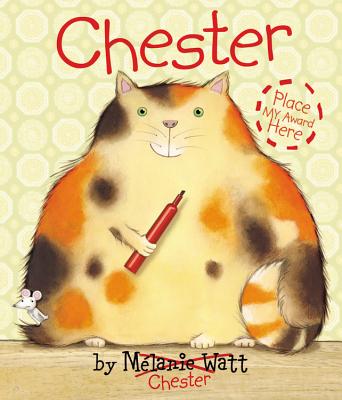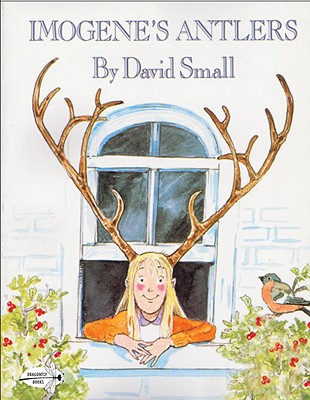How good is Lane Smith’s Grandpa Green ? I brought this up when I wrote about Mo Willems a while back, but there are a few children’s book creators who are so consistently good that their continuing excellence almost starts to seem commonplace. You find yourself expecting it – “What? Another Kate DiCamillo triumph? About time. I expect nothing less…” (Cut to entitled parent rolling their eyes and tagging their latest Tweets with #firstworldproblems.)
Lane Smith is one of those creators that my family completely takes for granted. We are huge fans of his work as an author and illustrator across a whole slew of titles like The True Story of the Three Little Pigs, The Stinky Cheese Man and Other Fairly Stupid Tales, Seen Art?, Madam President, Cowboy and Octopus, Princess Hyacinth, It’s a Book… the list goes on and on. My daughter swears up and down that Smith’s The Big Elephant in the Room and The Happy Hocky Family – two books that he both wrote and illustrated – are two of the funniest books she’s ever read. And we very purposely don’t own either title, because, when we take them out from the library, she sees it as an enormous treat.
All that being said, with the regard that we have for Smith’s body of work, it’s really spectacular to know that he can still surprise us as a creator. Specifically, I’m talking about his latest picture book, Grandpa Green, a book that I think, stands as a big shift in tone for the author, but it’s a shift that pays off beautifully.
First, don’t get me wrong. It’s NO surprise that Smith, as an illustrator, has delivered another gorgeous picture book. He’s proven himself as one of the most playful and innovative artistic talents in kids lit for years, so the fact that you want to frame every page of Grandpa Green and hang them around your house isn’t an earth-shattering revelation. I will say that Grandpa Green probably most closely resembles Smith’s Princess Hyacinth, but it adds this wonderful muted palette of greens and grays to an organic storytelling world that Smith creates out of an intricate and beautiful topiary garden. The ways that Smith is able to express emotion, memory, and the passage of time through the composition of this living, breathing garden is really something to behold.
For me, the big surprise of Grandpa Green is the emotional punch that Smith delivers as an author. Smith has always been funny and painfully clever – see It’s a Book as a prime example – but Grandpa Green has a much, much deeper emotional core than any of his previous books. The premise is heartfelt and elegant – a young boy recounts the life of his great-grandfather as he wanders through a topiary garden that collects some of his great-grandfather’s treasured memories. We see a shrub sculpted to remind us of “Grandpa Green” as a baby, another sculpted as a tribute to his first kiss, another representing his service in World War II, and another series of meticulously-designed garden creations curated into a loving tribute to his wife. We follow Grandpa Green’s great-grandson as he lovingly walks through the garden, touring through his grandpa’s memories and collecting his misplaced gardening tools. [read the rest of the post…]
{ 1 comment }
